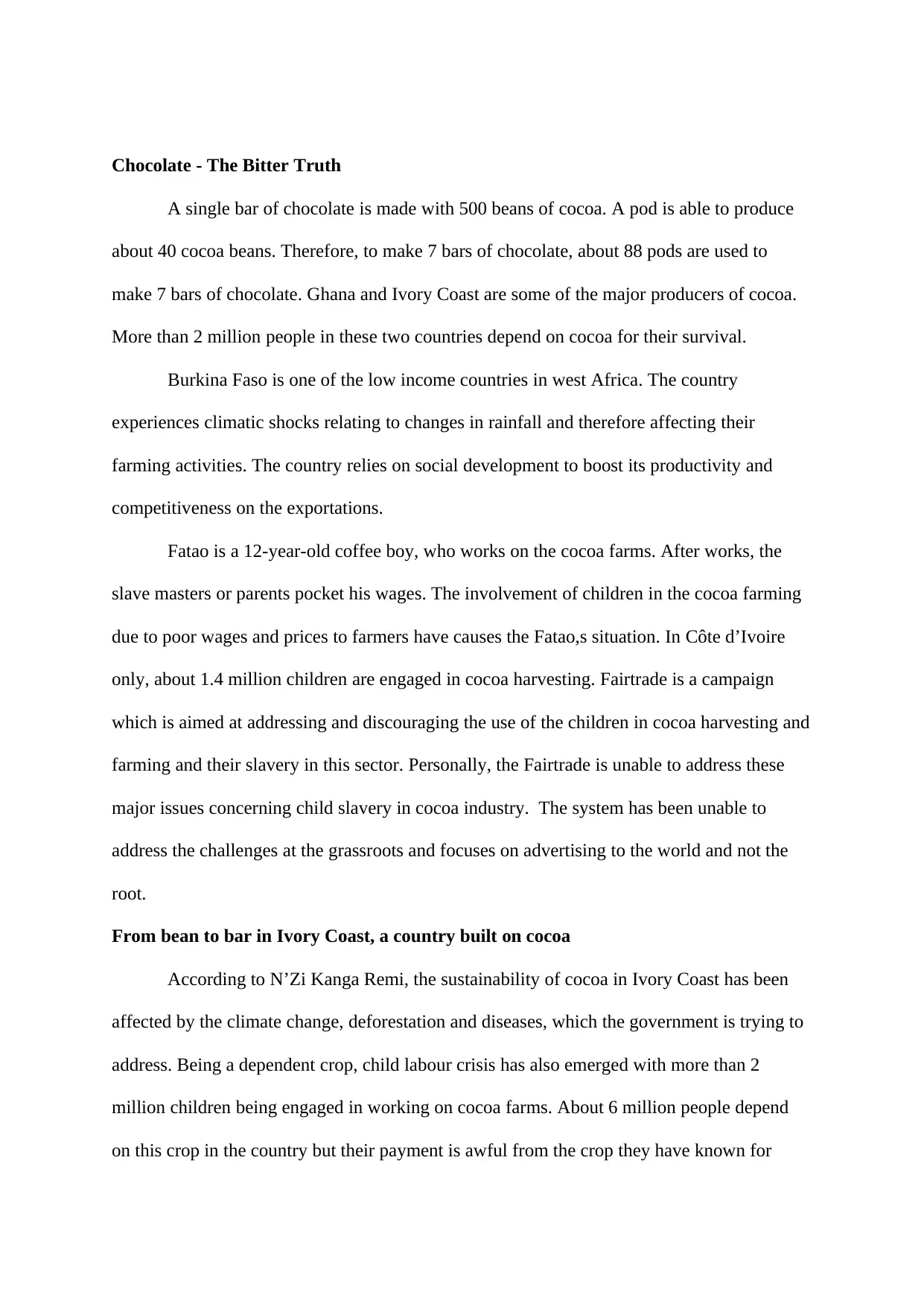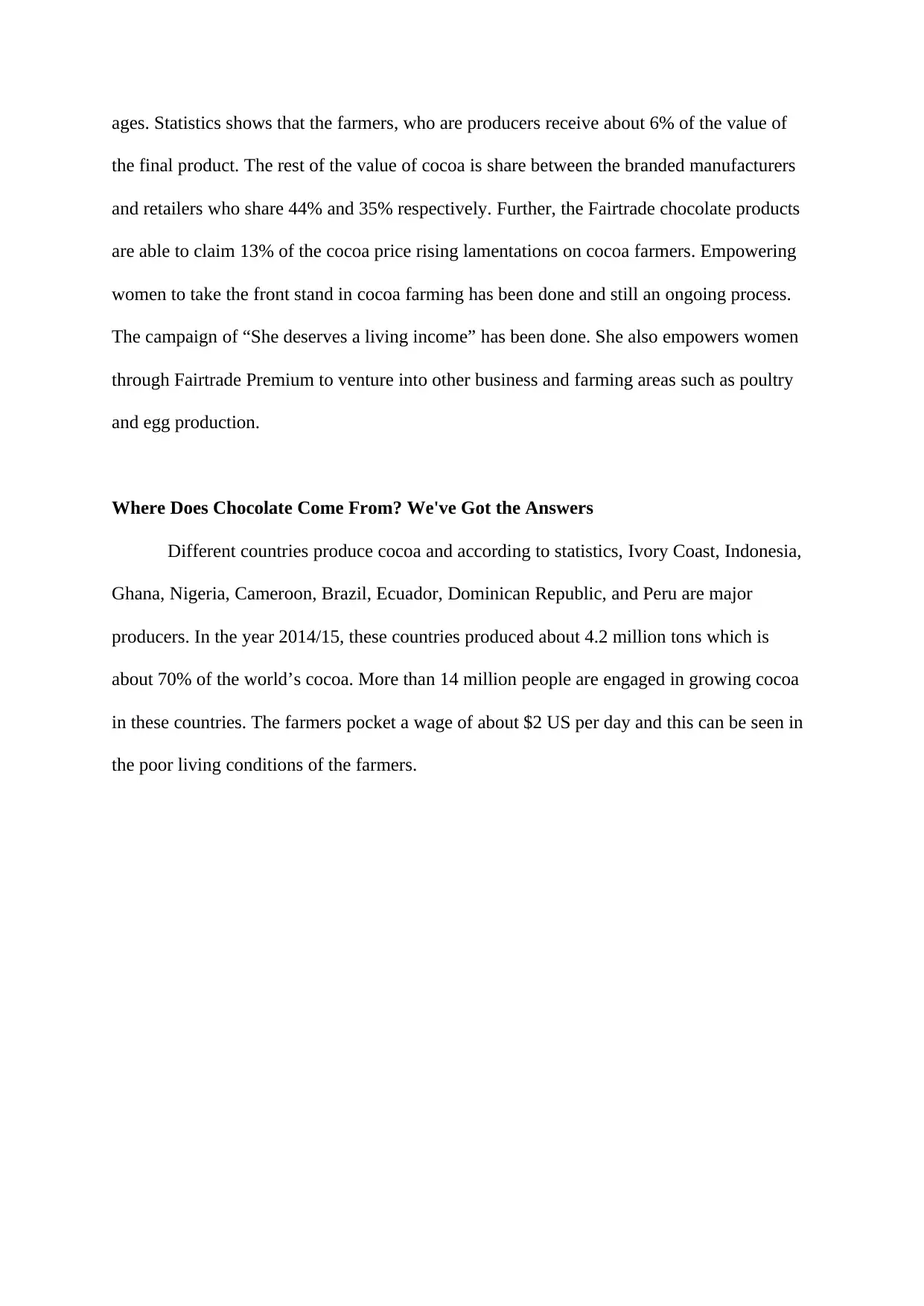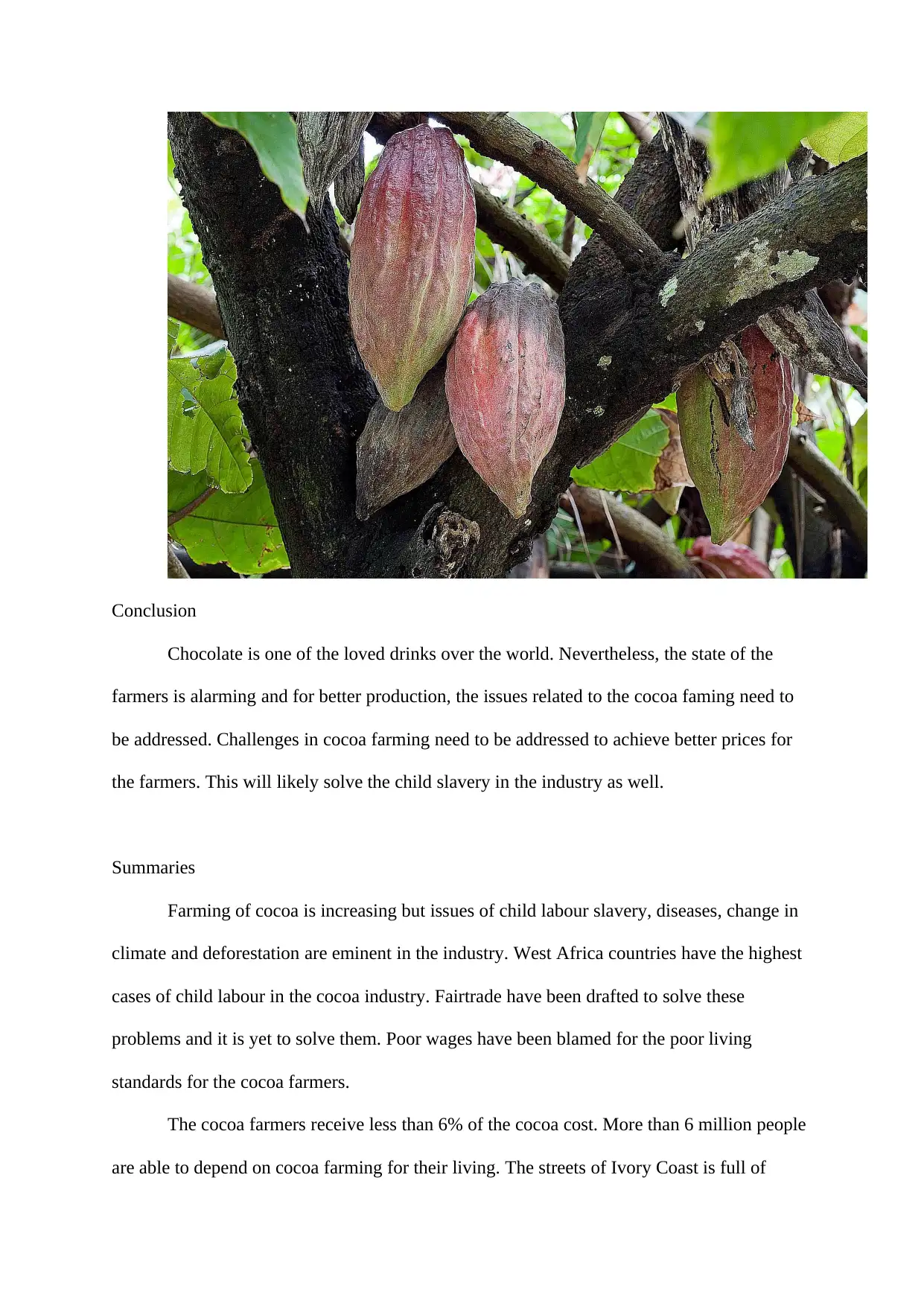Chocolate: The Bitter Truth - Industry, Fair Trade, and Labor Report
VerifiedAdded on 2022/09/15
|4
|797
|20
Report
AI Summary
This report analyzes the chocolate industry, addressing child labor, fair trade, and the economic conditions of cocoa farmers. It examines the number of cocoa pods needed for chocolate production, the reliance on cocoa in Ghana and Ivory Coast, and the social and environmental challenges in Burkina Faso. The report explores the exploitation of child labor, the effectiveness of Fairtrade, and the distribution of profits in the cocoa supply chain. It highlights issues like climate change, deforestation, and diseases affecting cocoa production, along with the low wages received by farmers. The report also discusses the empowerment of women in cocoa farming and the major cocoa-producing countries. The conclusion emphasizes the need to address challenges in cocoa farming to improve farmer livelihoods and combat child labor. The provided assignment solution is a comprehensive exploration of the ethical and economic issues within the chocolate industry, offering insights into the challenges and potential solutions for a more sustainable and equitable system.
1 out of 4








![[object Object]](/_next/static/media/star-bottom.7253800d.svg)